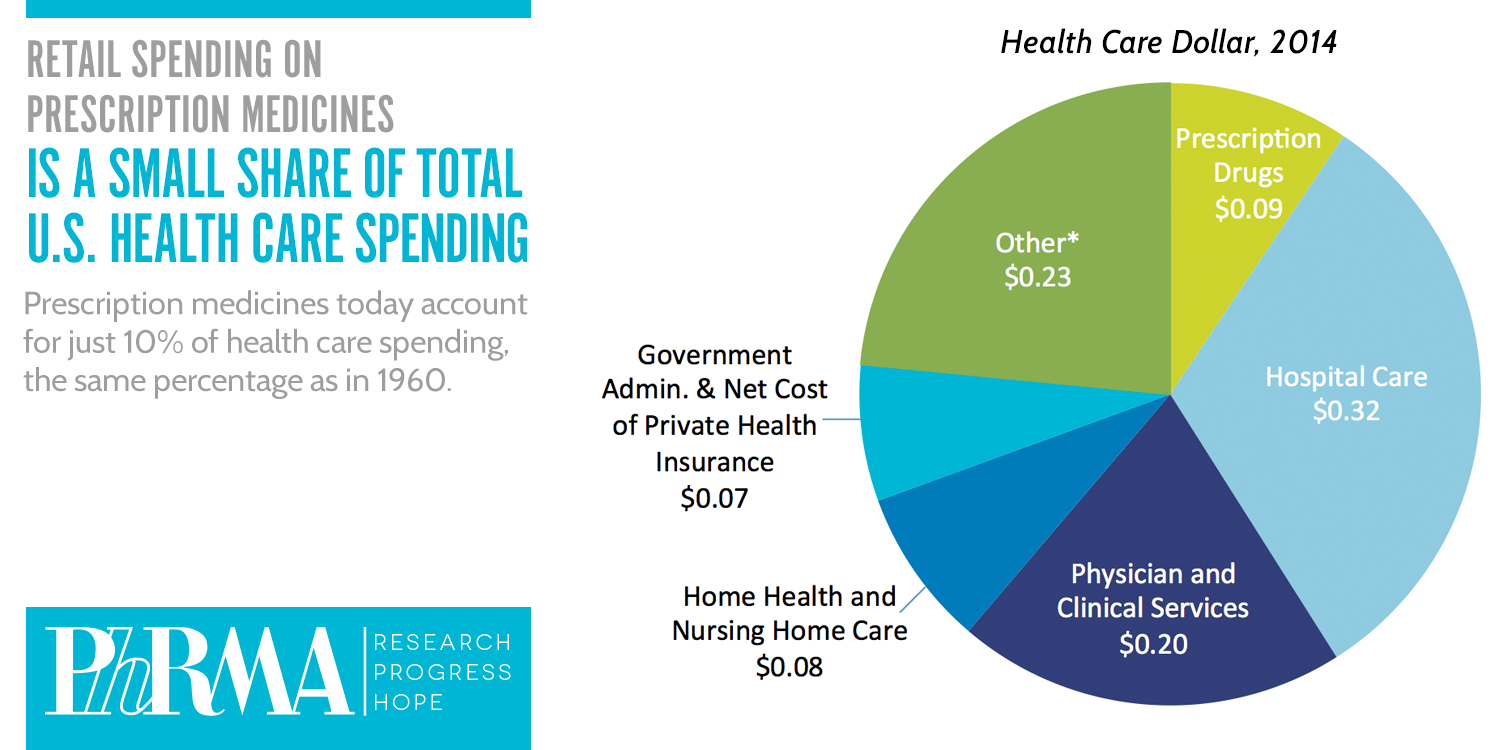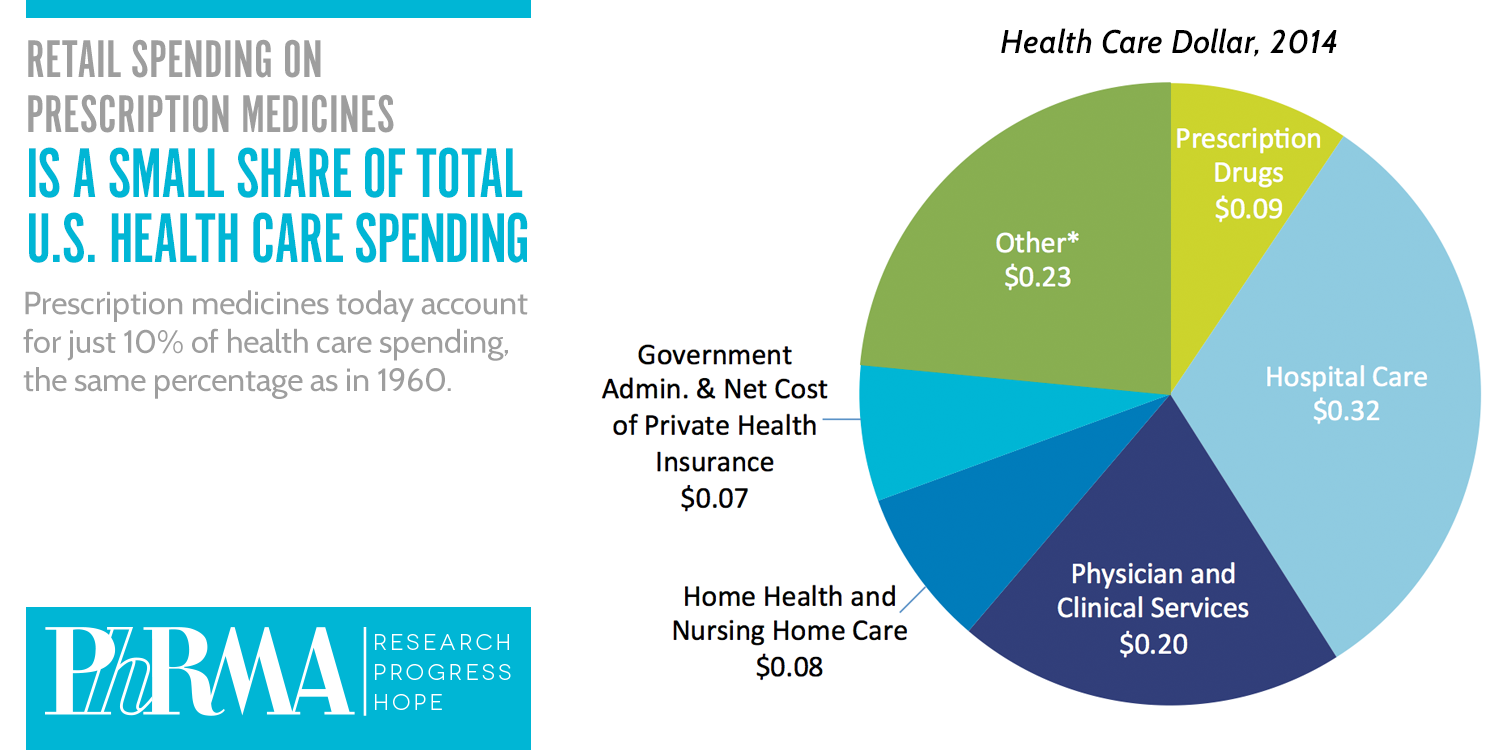New National Health Expenditure (NHE) projections released today by the Centers for Medicare & Medicaid Services (CMS) call into question claims that have been made in recent months about the sustainability of prescription drug spending. Even with new treatments and cures for hepatitis c, high cholesterol and cancer, spending on retail prescription medicines is projected to remain approximately 10 percent of U.S. health care spending through 2024 – the same percentage as in 1960.

Any conversation about the new federal government projections need to include the following 3 points:
- Increases in health care costs were expected in 2014, given 10 million of uninsured patients gained coverage with the expansion of insurance coverage under the Affordable Care Act. The NHE data projects that after spiking in 2014 at 12.6 percent, growth will moderate in the next few years to 5-7 percent – back in line with overall health care spending. To put this in context, administrative costs for private insurers grew 15.5 percent last year.
- The ten percent of health care spending going towards medicines is providing tremendous value for patients and the health care system broadly. Since its peak in 1991, the cancer death rate in the U.S. has fallen 22 percent. And new hepatitis C therapies have cure rates above 90 percent and dramatically decrease the burden of the disease on the U.S. health care system and the economy.
- Insurers recognize that medicines can play a crucial role in controlling future health care costs. According to the NHE data, over the next decade, increases in the number of prescriptions dispensed are expected because of modifications in treatment guidelines and changes in benefit management (i.e., value-based purchasing plans) that “stress better adherence for people with chronic health conditions to prevent the occurrence of adverse health events.”
Learn more about the cost and value of medicines at www.phrma.org/cost




